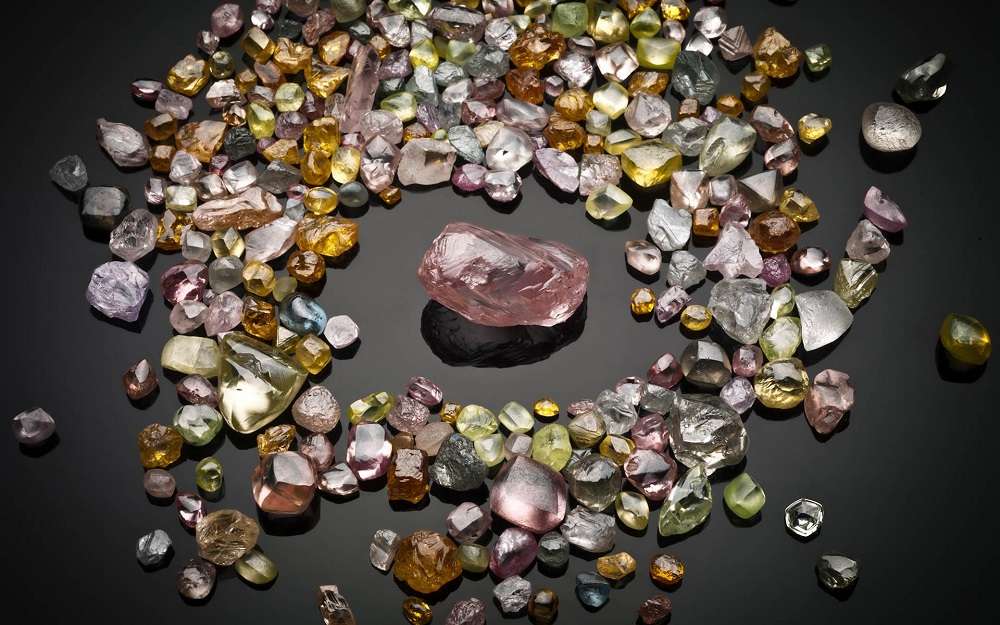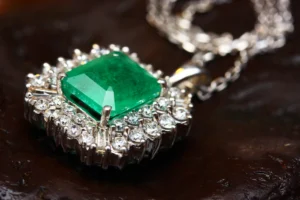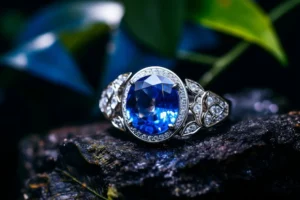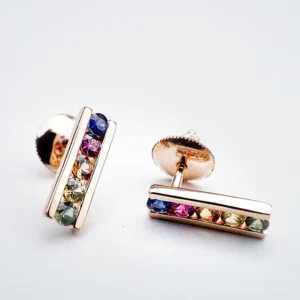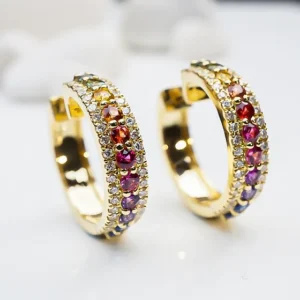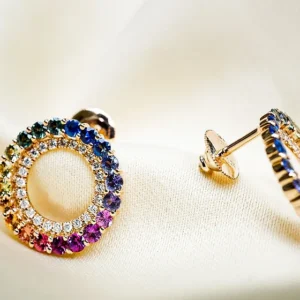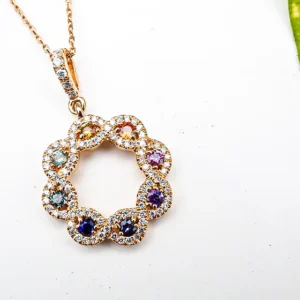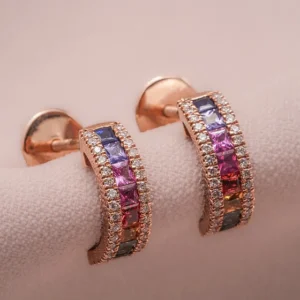Rough or Raw Diamonds: Unearthing the Beauty Within
Diamonds have long been a symbol of everlasting love and luxury.
Table of Contents
They adorn engagement rings, necklaces, and earrings, capturing the hearts of many. While most of us are familiar with the dazzling brilliance of polished diamonds, there is a hidden gem beneath the surface – rough or raw diamonds.
In this article, we will delve deep into the world of rough diamonds, exploring their origin, characteristics, value, and the ethical and environmental aspects of their extraction.
What Are Rough or Raw Diamonds?
Rough diamonds, often referred to as raw diamonds, are uncut and unpolished diamond crystals.
Unlike their polished counterparts, they retain their natural form, showcasing a unique, unrefined beauty. These diamonds are in their purest state, with no alteration to their shape, size, or color.
The Formation of Raw Diamonds
Rough diamonds are formed deep within the Earth’s mantle, where extreme heat and pressure cause carbon atoms to crystallize into the iconic diamond structure.
Over millions of years, volcanic eruptions bring these precious gems closer to the surface, making them accessible to miners.
Characteristics of Raw Diamonds
Rough diamonds exhibit various characteristics, including color, size, and shape. The color of a rough diamond can range from colorless to various shades of yellow, brown, and even rare hues like blue and pink.
The size and shape of a rough diamond can be irregular, reflecting their natural state.
Types of Rough Diamonds
Rough diamonds come in different types, such as gem-quality diamonds and industrial diamonds. Gem-quality rough diamonds are the ones suitable for jewelry, while industrial rough diamonds are used in cutting, grinding, and drilling tools.
Where Can You Find Rough Diamonds?
Rough diamonds can be found in various regions across the globe. Some notable diamond-producing countries include Botswana, Russia, Canada, and Australia. These diamonds are typically found in mines and riverbeds.
Mining and Extraction Process
The process of extracting rough diamonds involves both open-pit mining and underground mining. It’s a meticulous process that requires careful handling to prevent damage to the precious stones.
Sorting and Grading of Rough Diamonds
After extraction, rough diamonds undergo a sorting and grading process to determine their quality and value. This process helps in categorizing the diamonds for their intended use.

Natural Rough or Raw Uncut Diamonds
The Importance of Rough Diamonds in the Industry
Rough diamonds play a crucial role in the diamond industry. They are the raw material from which polished diamonds are created. The industry relies on a constant supply of rough diamonds to meet the demand for jewelry and other diamond-based products.
Rough Diamonds vs. Polished Diamonds
While polished diamonds are known for their dazzling beauty, rough diamonds possess a unique charm of their own. They offer a glimpse into the diamond’s natural form, showcasing its authenticity and raw elegance.
The Value of Rough Diamonds
The value of a rough diamond is determined by various factors, including its size, color, and clarity. Some rough diamonds have fetched astronomical prices at auctions, making them highly sought after by collectors and investors.
Diamond Cutting and Polishing
The journey from rough to polished diamonds involves a meticulous process of cutting and polishing. Skilled artisans use their expertise to reveal the hidden brilliance within each rough diamond.
The Impact of Rough Diamond Mining on the Environment
Diamond mining, like many other resource-intensive industries, has an environmental impact. It can lead to deforestation, habitat destruction, and water pollution. Efforts are being made to minimize these effects through responsible mining practices.
Ethical Concerns in the Diamond Industry
The diamond industry has faced ethical concerns related to the sourcing of rough diamonds, particularly in conflict zones. Initiatives like the Kimberley Process Certification Scheme aim to ensure that diamonds are not used to fund violence.
Identifying Rough or Raw Diamonds
In the world of diamonds, identifying rough or raw diamonds is an essential skill, especially for those involved in the diamond trade or enthusiasts who appreciate their natural beauty.
While it may seem challenging at first, there are several ways to distinguish rough diamonds from other minerals and gemstones. In this section, we’ll explore detailed methods of identifying rough or raw diamonds.
1. Visual Inspection
One of the initial steps in identifying rough diamonds is a visual inspection. Rough diamonds often have a distinct appearance that can be observed with the naked eye.
Surface Features: Examine the surface of the stone. Rough diamonds may have a glassy or waxy luster that sets them apart from other minerals.
Crystal Shape: Look at the crystal shape. Rough diamonds typically have well-defined, sharp edges and a polyhedral structure, which is different from the rounded shapes of many other minerals.
Transparency: While some rough diamonds may be completely transparent, others may exhibit a cloudy or opaque appearance, which is due to impurities or inclusions.

Natural Rough or Raw Uncut Diamonds in Different Colors
2. Density Testing
Rough diamonds have a high density, which means they are heavier than most other minerals and gemstones. You can perform a simple density test by comparing the weight of the suspected rough diamond to a stone of similar size.
Water Displacement: Submerge the stone in a container of water and measure the amount of water it displaces. A rough diamond will displace more water compared to most other minerals or gemstones of the same size.
Specific Gravity: Calculate the specific gravity by dividing the stone’s weight in air by its weight in water. A specific gravity value greater than 3.5 is a strong indication of a diamond.
3. Thermal Conductivity Testing
Rough diamonds are exceptional conductors of heat. You can use a thermal conductivity tester to check this property.
- Heat Conductivity: Place the suspected diamond on the probe of the thermal conductivity tester. Diamonds disperse heat rapidly, and the device will provide a quick reading.
4. Refractive Index Testing
Diamonds have a high refractive index, which means they can bend and reflect light in a distinctive manner.
- Refraction Test: Shine a light through the suspected diamond and observe how the light behaves. Diamonds will disperse light into a colorful spectrum, often referred to as “fire,” due to their high refractive index.
5. Diamond Tester
A diamond tester is a portable device that can quickly identify diamonds, both rough and polished. It works based on the principle of electrical conductivity.
- Electrical Conductivity: The diamond tester will indicate whether the stone is a diamond by measuring its ability to conduct electricity. Diamonds are poor conductors, and this property distinguishes them from most other gemstones.
6. Professional Gemological Testing
For a conclusive identification, it’s advisable to consult a professional gemologist. Gemologists use specialized equipment and techniques, including spectroscopy and microscopes, to accurately identify rough diamonds and assess their quality.
Keep in mind that some diamond simulants, such as moissanite, can mimic the properties of diamonds, making professional testing essential in certain cases.
By employing these methods and seeking expert guidance when needed, you can become proficient at identifying rough or raw diamonds, allowing you to appreciate their natural beauty and value with confidence.
7. Scratch Test
Rough diamonds are incredibly hard and can scratch most other materials. To perform a scratch test:
- Select a Suspect Stone: Choose a stone you suspect to be a rough diamond.
- Find a Known Diamond: Use a known diamond or another diamond with a similar size to compare.
- Make a Scratch: Gently attempt to scratch the known diamond with the suspected stone. If the known diamond gets scratched, it’s likely that both stones are diamonds. Remember, only a diamond can scratch another diamond.
8. Ultraviolet (UV) Light Testing
Diamonds may exhibit fluorescence under ultraviolet light, emitting a bluish or whitish glow. To perform UV light testing:
- Use a UV Lamp: Shine a UV lamp on the suspected rough diamond.
- Observe Fluorescence: If the stone exhibits fluorescence, it is more likely to be a diamond. However, not all diamonds fluoresce, so the absence of fluorescence doesn’t rule out a diamond.
9. Magnetism
Diamonds are not magnetic. You can use a magnet to check for magnetic properties:
- Use a Magnet: Hold a strong magnet close to the suspected rough diamond. If the stone is attracted to the magnet, it is not a diamond.
10. X-ray Imaging
For a more thorough examination, consider using X-ray imaging. A diamond’s internal structure, including inclusions, can be visible through X-ray images.
- Professional Inspection: Consult a professional gemologist or jeweler who has access to X-ray equipment for a comprehensive analysis of the stone.
11. Weight and Size
Rough diamonds are typically heavier than most other minerals and gemstones of the same size. You can measure the stone’s weight and compare it to its size.
- Weigh the Stone: Use a jeweler’s scale to measure the weight of the suspected rough diamond.
- Consider Density: Rough diamonds have a high density compared to other gemstones.
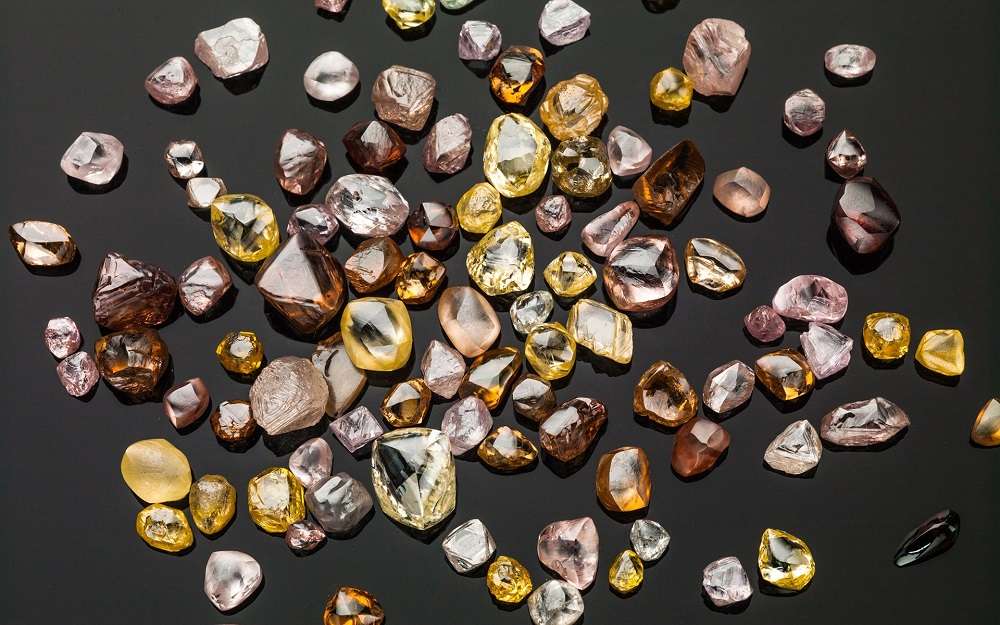
Natural Rough or Raw Uncut Diamonds in Pink, Brown & Yellow
12. Microscope Examination
A jeweler’s loupe or a gemological microscope can reveal the internal characteristics of a rough diamond.
- Inclusions: Examine the stone for small mineral inclusions or imperfections, which are common in rough diamonds.
- Growth Lines: Look for growth lines, which are often visible under magnification and can indicate natural diamond formation.
13. Professional Certification
For a definitive identification, seek a professional gemological certificate. Gemologists use a combination of advanced testing equipment and their expertise to provide accurate and certified information about the authenticity of rough diamonds.
By employing these additional methods and seeking professional certification, you can further enhance your ability to accurately identify rough or raw diamonds, ensuring confidence in their authenticity and value.
Conclusion
In conclusion, rough or raw diamonds offer a fascinating glimpse into the world of diamonds before they are transformed into the glittering gems we are familiar with.
Their natural beauty, formed over millions of years, adds a unique dimension to the diamond industry. However, it’s important to consider the ethical and environmental aspects of diamond mining to ensure a sustainable future for these precious stones.
FAQs About Rough Diamonds
Rough diamonds are typically less expensive than their polished counterparts. However, the value of a rough diamond depends on factors like size, color, and clarity, and some can be exceptionally valuable.
While it's uncommon for consumers to purchase rough diamonds for personal use, some jewelers and artisans offer custom rough diamond jewelry. Most rough diamonds are sold to diamond manufacturers.
No, not all rough diamonds are clear and colorless. Rough diamonds come in various colors, including yellow, brown, and rare hues like blue and pink. The color is determined by impurities within the diamond.
Rough diamonds and uncut diamonds are often used interchangeably. Both terms refer to diamonds that have not been faceted or polished, preserving their natural state and form.
To ensure ethical sourcing, look for diamonds certified through the Kimberley Process Certification Scheme, which helps prevent the trade of conflict diamonds. You can also choose jewelers who support responsible and sustainable mining practices.

